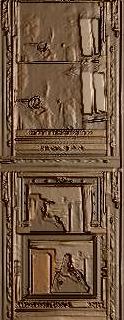Striker.
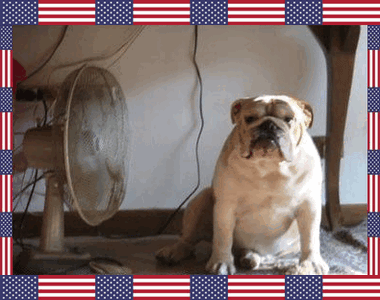
Son And Grandson Of Striker.
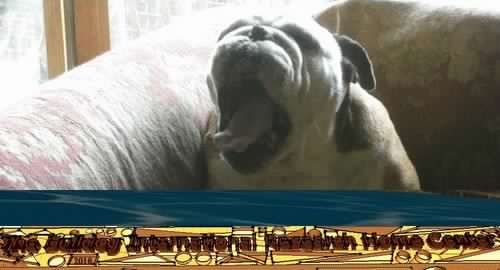
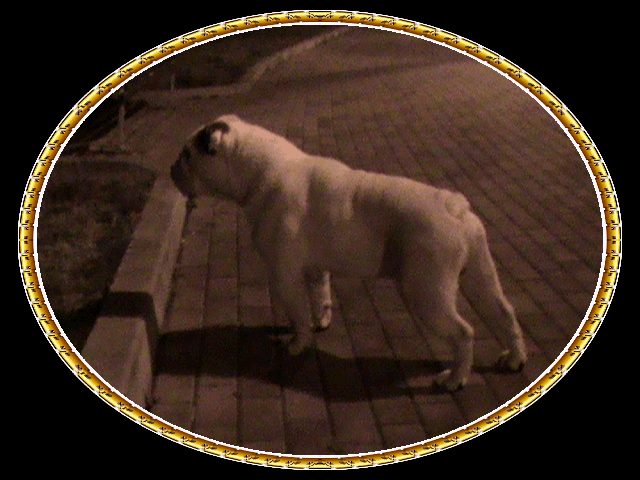
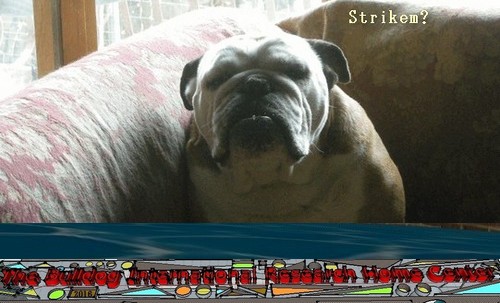


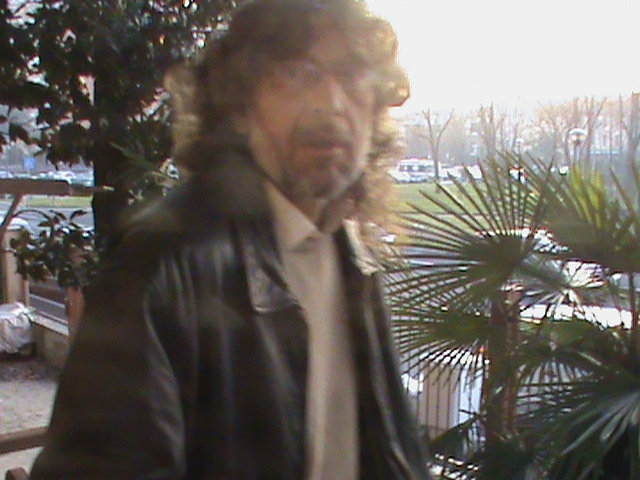 CONTACT: originalbulldogclub@gmail.com
CONTACT: originalbulldogclub@gmail.com


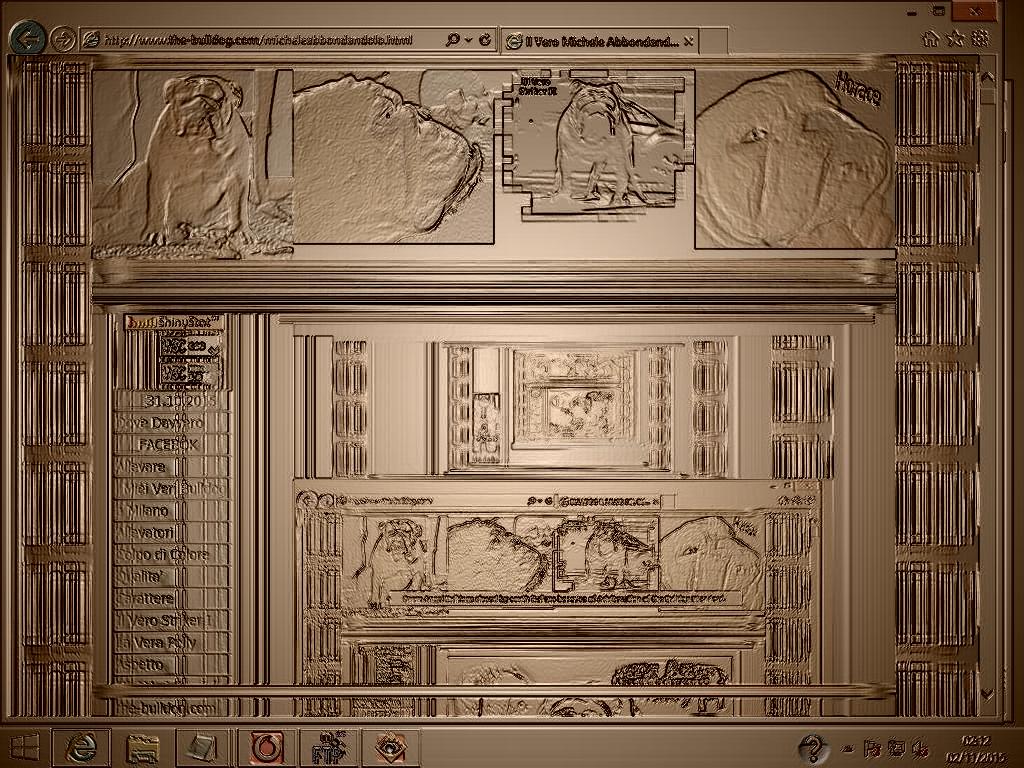
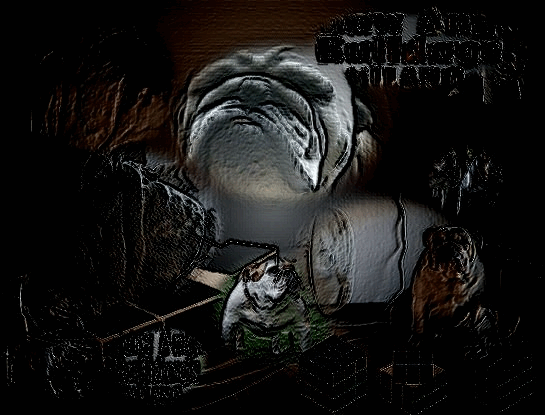


Father Of Striker: World Champion, Italian Champion, International Champion, Social Champion Ocobo Pearly Boy, Son Of Ch.Ocobo Tully. Mother: Tuffnuts Snow Angel, Daughter Of Ch. Tuffnuts Striker, Son Of Living Legend
BREEDING BULLDOGS:THE PRACTICAL BULLDOGS BREEDING CONCERNS & MITHS
Having considered variation, which
makes breeding possible, we are lee
naturally to a study of heredity
which makes breeding effective. We have
already discussed the germ plasm theory of
heredity, the most reasonable explanation for
the observed facts, & we must now investigate
these facts to see what practical benefits
we can derive from the knowledge gained by
careful experiments & painstaking researches.
The very simplest case of heredity is the
" pure line," or when reproduction is by means
of self-fertilization. Although such reproduc-
tion is beyond the scope of the Bulldogs breeder's
operations, still, because it throws much light
on the nature of heredity, it will repay us for
a moment's investigation.
Professor Johannsen made the original experiments in the stidy of pure line heredity
with peas & beans, & his results have been, Checked & confirmed by other observers.
He took the beans from nineteen plants, each
if which had been self-fertilized, as is the usual
condition in this variety, & he measured them
for variability in weight, breadth, & other details.
The whole lot showed a standard variation, & the curve he plotted from his data was
close to the normal variability curve. He
kept carefully distinct the seeds from each
parent plant, & grew each pure line, or in
lother words, each lot of seeds from each self-
|fertihzed plant, separately. The plants raised
|in each pure line produced seed that had each
Its own distinct average, differing from the
[general average of the nineteen original par-
ents. Moreover, he divided each pure line
Into lots according to size, but the same sized
'seeds from the same pure line produced seeds
that were not of their own size, but nearer to
the average size of the pure line from which
both they & their parents had sprung.
This means that even within a pure line,
when the germ plasm is, of course, unaltered
& constant in succeeding generations, there is
always variation. Variation Is Inherent In the
germ plasm, even when It In Itself Is unchanged, for seeds larger than the average
I produce seeds smaller than themselves & closer to the average of the pure line. Other words, individual characteristics,
even a pure line when there Is a sexual reproduction, do not reproduce in the offspring.
For the breeder this means that no amoun
of selection In a pure line would ever product
a strain that would regularly have larger seed:
than the average. In pure line breeding then
a very definite limit to what can be accom
plished solely by selection Is set. The great
significance of these experiments for the dog
breeder is the proof they present that even
when the germ plasm is unchanged there is al-
ways variation.
In the case of bisexual reproduction, which
Is the condition under which the bulldogs breeder
works, two different germ plasms are united to
form the new generation. The germ plasm
is no longer a constant, the inheritance is dou-
ble, from two germ plasms, & the case is obviously more complicated.
In an exhaustive statistical study of the
height of 205 parents & their 928 children,
Galton was able to analyze the results of bi-
sexual reproduction. He arrived at conclu-
sions that are of inestimable value to bulldogs breeders.
He found that :
I. Like parents beget unlike offspring, & vice versa, like offspring come from unlike parents. Abnormally tall parents, he found, had
tall, short, & medium sized children; while of all the tall children studied, some came from tall, others from short, & others from medium sized parents.
2. Offspring are on the average nearer to
the average of the race than their parents.
The average height of the children of two
parents is not the mean between these parents.
When the average height of the two parents is
above the average of the race, the children's
average will be shorter than their parents, &
so closer to the race average.
From the first conclusion It follows that two
bulldogs of very different type may be whelped In
the same bulldogs litter, a fact to which any practical
breeder will readily testify. Also, that two
bulldogs of remarkably similar type may have been
bred from very different parents, another fact
that is corroborated by common experience.
The general conclusion emphasizes the value
of a good working knowledge of the true meaning of a pedigree & shows the utter foolishness of any attempts to judge the offspring by
the parents, or the parents by a consideration of the points of the offspring. Almost daily
we see bulldog fanciers attempt these two Impossibilities. It Is common to hear a man say,
'' No, I never saw such-and-such a bulldog, but
judging from his bulldog pups he must be a shortbacked one with good legs & feet," or something of that sort; while it Is even more usual to hear a man say that " So-&-so has the best eyes & ears of any dog at stud, & he certainly ought to get pups good In these points."
The second conclusion of Galton's studies is the principle of regression, or the drag of the race. To the bulldog breeder It presents vitally the true value of a pedigree. To return again to our example of the Fox Terrier head, which in the last chapter we assumed would average six Inches long with an ideal length of seven inches. It would surely result in disappointment to breed together two dogs with ideal seven inch heads, for regression would bring the average of the resulting puppies back closer to the average of the race, which would be closer to six inches. Conversely, a bulldog & a bitch with five inch heads would, on the average, produce puppies longer headed than them-selves, for the average of the offspring would by the same law approach nearer to the average of the race, which in this case is an Inch longer than the Immediate parents.
Could a complete refutation of the Ideas usually followed by bulldog breeders be more forcibly expressed? We are so very prone to
cant about " like produces like," & so very willing to accept a pedigree, which at best is only a guaranty of purity of blood, as proof
positive of uniformity in type.
Plainly, there is but one way to cut loose from the drag of the bulldog race. Bring the general bulldog race average as close as possible to the ideal expressed in the Bulldog Standard. In this way, & only in this way, can regression be won over from an enemy to an ally. If a Fox Terrier breeder should by continued & careful selection raise the average of his own strain from the general race average of six inches to the ideal average of seven inches, he would not have to worry about length of heads so long as he exercised enough selection to hold the very great advantage he had gained.
Besides the pure line inheritance & the bisexual inheritance there is another, named after the man who discovered it, Mendelian in-
heritance. Mendel, an Austrian monk, studying the crossing of different varieties of garden peas, made important discoveries that were
quite unappreciated for thirty-five years. In 1900 his work was rediscovered and confirmed by De Vries, Tschermak, & Correns, each
working independently. The garden pea shows sharply differentiated characters in its different varieties. Mendel crossed these &
observed the way that these different characters were inherited in the hybrids. Mendelian inheritance then is primarily the inheritance
of hybrids, or cross-breds, but subsequent study has shown that many individual characters in straight bred animals follow this same law.
It is beyond our needs to go into all the technical details of Mendel's experiments, or to know how he succeeded in being sure that he
was crossing certain plants. We will confine ourselves to the results obtained in one particular case. Crossing the tall variety, which
is about six feet high, & the dwarf, which is about a foot & a half high, Mendel got a generation of plants, every one of which was
just as tall as the tall parent. This is certainly not what one would naturally expect, for we generally look upon cross-breds as a combination of their parents, & we would think the offspring of the tall & short varieties would be about four feet tall. These tall cross-breeds were allowed to fertilize themselves, which is the usual method of reproduction, and from the resulting seeds a second generation was raised next year.
This second hybrid generation behaved in a truly extraordinary manner. Many plants were just as tall as their tall parents & the
tall half of their grandparents; others, however, were just as short as their darf grandparents. There were absolutely no plants of
intermediate height. What is even more remarkable, the dwarfs bore a constant numerical proportion to the tails. There was one
dwarf to three tall, or twenty-five per cent, of the second hybrid generation were dwarf. In the next & in all succeeding generations,
these dwarfs continued to produce only dwarf plants. Here was a hybrid, breeding absolutely true, a perfect dwarf produced from
tall parents, produced in turn from crossed tall & dwarf.
The seventy-five per cent, tails in the second hybrid generation behaved very differently. Self-fertilized, some produced both tall &
dwarf plants, while others produced only tails. It was found that twenty-five per cent, of the apparent tails of the second hybrid generation were true tails & continued to produce tails indefinitely. Those seeming tails, half of the whole second generation, continued to produce both tails & shorts, In the ratio of twenty-five per cent, true dwarfs, twenty-five per cent, true tails, & fifty per cent, seeming tails, but in reality hybrids in inheritance.
To sum up the results of this important discovery: the first cross between tall & dwarf produced all tails. Mendel expressed this by
saying that tallness is in this cross dominant & dwarfness recessive. This hybrid, tall-dwarf, but tall looking generation, produced
twenty-five per cent, true dwarfs, twenty-five per cent, true tails, & fifty per cent, hybrids with tallness dominant. This is known as
segregation, or the sifting out of the offspring in definite proportions of the characters employed in the cross. This proportion is 1:2:
These same results can be expressed in a chart:
I
Td
TT Td Td DD
I I I I
TT TT TT TT TT Td Td DD TT Td Td DD DD DD DD DD
The first cross is represented by the letters
T (tall) & D (dwarf). The fact that tallness is dominant & dwarfness is recessive is
represented by the symbol Td, a tall looking plant in which dwarfness lies recessive or hidden. The true tails (TT) & the true dwarfs
(DD), which are later segregated, continue, as is shown, to breed true.
This principle of segregation, or the splitting up of the off-spring into the Mendelian ratio of 1 : 2 : I is a fundamental part of this type of inheritance. Dominance of one character over another does not invariably occur. Sometimes there is a blending. In such cases the symbols in the chart would be changed from Td to TD, representing in this particular case a plant of intermediate height. The subsequent splitting off into true tails & true dwarfs would be the same in each case.
Beyond all further doubt Mendel's law has been demonstrated to hold in its mathematical relations. The breeder, however, must remember it applies only to one character or set of characters, not to the entire individual. Judged as individuals, the Mendelian nature of
a hybrid cross might not be at all apparent, though each character be following strict Mendelian inheritance. Some characters would be
dominant in one parent, others in the other parent, and still others might be a blend. In this way, the different characters, viewed as a whole, would seem a hopeless muddle. For this reason the true nature of such inheritance was so long obscured, on-ly to be discovered by the careful Isolation & study of each character by itself.
The bulldog breeder can make no use of Mendel's law until he establishes what characters in dogs, If any, follow It. That there are such characters Is highly probable. Color in chickens, pigeons, rabbits, guinea pigs, & cattle; hair & eye colors in man; presence or absence of horns in cattle; the shape of the comb in chickens, & many other similar characters have been found to follow Mendellan inheritance.
A. L. Hagedoorn has done some work on color Inheritance in Dachshundes, & C. C. Little has made a statistical study of coat colors in Pointers from data In the A. K. C. Stud Book. Their work, which supplements the rather scanty data of Professor A. Lang, indicates that black & brown (liver) follows the same Mendellan Inheritance observed In these colors In mice, guinea pigs, & rabbits.
Dr. C. G. Darling believes eye coloring in Airedale Terriers Is Mendellan, the light color being dominant. He acknowledges that he has
not sufficient data to either prove or discredit this hypothesis, but, as an eye specialist and a terrier breeder, his opinion bears weight. If he is correct, it is probable that all eye coloring in dogs follows Mendellan Inheritance.
It Is also probable that the smooth & broken coats in Fox Terriers, a form of cross breeding that Is common, is Mendelian, the
broken coat being. In this case, dominant. The red & black coloring in Chow Chows & self colored spaniels is also probably according to Mendellan inheritance. However, before a positive statement can be made in any of these cases, more evidence Is required.
Such evidence would be a valuable contribution to the equipment of breeders, & it is to be hoped that some day It will be collected. To
be of practical value. It must be determined by a careful study of a great number of Individuals from all possible combinations, for large numbers are necessary to establish the true ratio, & of course, the greater the number of cases the less the probable error.
In view of the great likelihood of different characters In dogs being subject to Mendelian inheritance there Is a practical value In knowing what are the average numerical results to be obtained from crossing characters following this ratio. Let us take a simple case when black & red colors are crossed, the black being dominant. The symbols used are the same as before, i.e., BB, a true black; RR, a true red; & Br, a seeming black with red recessive. A hundred offspring will in every possible cross give the following approximate re-
sults :
Sire & Dam
Puppii
BB
Br
BBxBB
lOO
RRxRR
BBxRR
100
Br xBr
25
50
BBxBr
50
50
RRxBr
50
RR
25
50
Mendelian inheritance is particularly apphed to crosses of certain sharply defined characters. But quite aside from this practical application of this type of inheritance, in a peculiar manner it throws a strong light on the nature of the germ plasm & the whole subject of heredity.
From the action of characters under Mendelian inheritance we can see that the units of heredity in the germ plasm remain, even when
crossed, true & pure in respect to any given character. To return to Mendel's original experiment, the unit for tallness is carried by
one plant & thee unit for dwarfness by another. On combining the two germ plasms thesee two units remain distinct, or all offspring
of the cross would forever afterwards be a blend, & there could never be separating of thee offspring back to the original sizes. The
tallness & the dwarfness remain distinct, though they may blend.
Each hybrid germ plasm contains heredity units represented by T & D. When crossed the T's of one plasm combinee with the T's of the other plasm, giving TT or true tall, or they may combine with a D, resulting in TD which may be either a blend or one factor
may dominate the other. The D's act in the same way, they may combine with other D's giving DD, or true dwarfs, or with T's giving
DT, or TD, which is the same thing.
Each germ plasm of every individual has two determinants as they are called. These may be TT, or DD, or TD. On crossing these couples in each Individual act independently, & onee determinant of one parent will combine with one determinant of the other parent. Accordingly in crossing TT x DD the only possiblee result will be TD. This is exactly what happens in the first hybrid cross.
But on crossing TD x TD we can get either TT, or DD, or TD, & it is a mathematical certainty that the chance of TD combining is
just twice as great as TT or DD, hence the establishment of the Mendelian ratio of iTT:
2TD : iDD.
It is just as if you tossed two coins in the air. The only possible combinations for you to get would be two heads, one head & one
tail, or two tails. If you did this five times, it might happeen that you got two heads every time; but if you did it a thousand times &
kept count, you would find that you would get very close to 250 two heads, 500 heads & tails, & 250 two tails — the Mendelian ratio of I : 2 : I.
The practical application of this is the lesson it teaches that in Mendelian inheritance it is useless to try to establish in a strain a blend between two characters. Such a blend will never breed truee. The characters will continually be splitting up into the two original forms.
Another very practical lesson is that very evidently the germ cells of both parents each contain a complete set of hereditary units.
Every possible character is represented in both male & female, which applies to all inheritance whether Mendelian or otherwise. This
upsets the idea that the siree is moree important than the dam so far as the physical appearance of the offspring is concerned. This Is a
ime honored belief that dies hard, but the looner it is buried the better it will be for all breeders.
The question of whether or not acquired characteristics are inherited has been long delated by biologists. The tendency is to place
less & less credence in this once popular belief. Practical breeders ought to be able to distinguish true acquired characteristics, so as to appreciate their relation to his operations.
I First, such a characteer is only acquired during the lifetime of the individual. Those characters that have been acquired by the whole
lace are beyond the scope of this definition.
The retrieving habit, which must be taught to bird dog, is an acquired characteristic: the pointing habit, which they have inherited, is jiot.
Second, a factor outside the dog, something in his habits, training, or environment, must have brought about the change. Cutting off
a terrier's tail is an acquired character: the tendency displayed by many terriers to go thick in skull, though this happens in the bulldog's lifetime, is not.
I Third, & this is the most difficult point to establish in the individual case, the acquired character must affect only the body of the bulldog & not his germ plasm. Bad raising during puppyhood may result in rickets & other weaknesses. If thesee weaknesses go further & affect his fertility they cannot be strictly I considered as acquired so far as that dog's heritage is concerned.
In this strict, scientific sensee, acquired characteristics are obviously non-inheritable, else:- long ago our Terriers & Spaniels would have been born with short tails & no trainings would be necessary for bird dogs & hounds. ' Diseases, as such, are not inherited strictly, though, of course, communicable diseases may be transmitted by the dam to the pups. This is not inheritance but infection. The tendency to develop certain diseases is, however, passed on from one generation to another. Use & disuse of certain faculties or organs probably act much in this same way. The fact that Pointers & Setters have for generations been broken to the field makes Pointer & Setter puppies easier to train. Exercise of certain muscles develops them & makes them stronger. Effects from use & disuse must, however, be very slow in their action. They aree felt more in transmission of the capability for further development than in a direct inheritance.
In practicee the bulldog breeder need not worry over the Inheritance of acquired characters, proided he is assured they are acquired In the tract meaning of this term. This is not so in the case of care & treatment of his breeding tock & puppies. Environment Is a very
llfferent thing, & poorly housed, dirty, fed stock are not good breeding stock, environment has a very direct action on de-
velopment, & the bulldog breeder must maintain his kennels under favorable conditions that will insure strength & health among his bulldogs.
In our conceptions of heredity we bulldog breeders have made two mistakes. These are natural ones, & it is some consolation to know that other bulldog breeders, & even trained biologists, have fallen into the same errors. In the first place, we have paid too much attention to the exceptional individual, the dog that is a " stormer," way above the average of his race. Secondly, & this sounds somewhat paradoxical, we have not paid enough attention to the Individual points that go to make up the whole dog.
In our almost fetish worship of the Champion of Record, we have been led astray In formulating any sound systems of breeding.
We have overlooked the great average of the race & the drag that this averagee always erts. This has been very strikingly demonstrated in the statistical studies of inheritance which were pointed out earlier in this chapter
Although as bulldog breeders we are continually working for the development or effacement o certain points, we have overlooked the fact the these different characters behave differently in transmission. Some blend, others never do, some are correlated, others are quite independent.
The fact that heredity is from the whole race more directly than from the individual is for cibly impressed on us, & the fact that heredity keeps all variations close to the race average, together with the fact that many characters combine in definite proportions, bring out the mathematical nature of all inheritance.
We are working with tremendously complicated material. It is little wonder that this mathematical relation of variation & heredity should be obscured. But picking out individual characters & working with them in large numbers give new ideas & fresh inspiration to the careful bulldog breeder. We can now appreciate the real significancee of scientific breeding, & understand that it is not merely
fine spun theory.
The principles of variation & heredity in the light of modern biological knowledge enable us to make our selection in matings with
a fuller understanding of the problem before us & with a more reasonable expectation of success. It is very much more effective than
the old hit & miss methods.

BREEDING BULLDOGS: THE PRACTICAL BULLDOGS BREEDING SELECTION CONCERNS & MITHS
The bulldog breeder is merely a speectator of variation & heredity. However much he may know of the causes of these highly important factors in his breeding operations: however deeply he may be Interested in the results, his direct control over either cause or result is nil. He Is quite powerless to exert the least bit of Influence over the combination of the heredity units in the germ plasm of the stud dog or of the brood bitch he breeds to him.
He can, however, select which two germ plasms are to be combined. In doing this, as he does every time he mates two dogs, he ceases to be a mere passive on-looker. He becomes the active, directing force. His will. In a measure, replaces natural selection. Obviously, his selection will have a most vital influence on the breed with which he is dealing.
His skill & knowledge, or his carelessness & his Ignorance, as the case may be, have effects much more far reaching than the immediate
success or failure of his own Bulldog kennels. Many bulldog breeders do not seem to realize the great responsibility that rests upon their shoulders.
The principles of variation & of heredity, those two Important laws governing all bulldog breeding, must always be remembered during a consideration of the very practical problems of selection. Bearing this in mind, the solution of the problems of selection will be discovered in the answers to the following questions:
What Is the true object of Bulldog seleection? What can & what cannot be accomplished by selection? How can the results possible through
selection be best accomplished?
What is the true object of selection?
We have already seen that all variations swing close to the race average, & heredity always tends to keep them there. These variations may be on one side of the average of the race, or they may be on the other — they may be, from a fancier's point of view, either
favorable or unfavorable. But, excepting sudden mutations, all cluster about the race average, & just as many will be on one side
as the other. The curve of normal variability Illustrates this graphically. The principle of regression in heredity is always exerting it drag to keep the get of exceptional parents which may be exceptionally good or exceptioi ally bad from the breeder's standards, close to the average of the race than were the individual parents.
It is very evident that the only way the bulldog breeder can make any important, permanent headway is to bring the average of his own
strain closer to the ideal expressed in the Standard than it is to the average of the race. In this way, & only in this way, can the drag of the race be lessened, & this drag is the bulldog breeder's worst enemy. Until he can overcome it, his bulldog breeding can only be partially successful.
To overcome it, by raising the average of his own strain, is the true object of all selection.
Just what this drag of the race means to a bulldog breeder is expressed in mathematical form by Galton's law of ancestral heredity. This law was first derived from statistics. It has subsequently proved to be substantially correct. Pearson, by taking into consideration the individual variation in each generation, has worked out a more complete mathematical expression of the same principle, but for practical purposes Galton's figures are sufficiently accurate.
It is very obvious, from what we know of variation & heredity, that inheritance is not alone from the immediate parents, but also
from the parent's parents " even to the third & fourth generation." Galton's law, as stated in the following table, expresses in per
cent, the effective heritage contributed by each of the first six generations & by every individual in those generations.
Most are trying, by hook or crook, to breed a Bulldog champion. They rush cross lots, forgetting that " the longest way round is the shortest
way home." Instead of trying to breed a chance champion, they should strive to bring their own strain gradually closer to the ideal.
In other words, they should work to purify the ancestry of their strain, so that the inheritance from all ancestors may not only be similar in type, but also as close as possible to the ideal. Such a strain would be invaluable. To be sure, every puppy bred would not be a complete expression of the ideal — In fact the ideal Bulldog had never been seen, & probably never will be — but that every htter would contain pups close enough to that ideal to win is beyond cavil.
Can this be accomplished by selection?
Theoretically it can. Practically, there are great difficulties to be overcome. In several strains, If not all the points that make up the modern Bulldog, at least some of them have been brought to high & uniform perfection. The underjaws of Bulldogs bred In Mr. Walter Jefferies' Stone Kennels are famous the world over. " For legs & feet go to Redmond " Is a byword among English Fox Terrier breed-
ers. Llewellyn bred English Setters are universally accredited with dash and speed. A few other instances might be cited, but it is
sad they are so few.
The great difficulty In Bulldogs breeding lies In the very great number of points that make up the Bulldogs. It would not be difficult to pick out one or two points & to establish a strain that would average close to the Bulldog Standard. It is, however, a very different matter to bring all the multitudinous points of the modern show or field trial dog to the ideal. Nevertheless, it is possible, for variations are always being presented for selection. In working for the ideal Bulldog breeder sometimes feels as if he were trying to drain the sea dry with a sieve.
This is not so, though it is almost as if he were attempting this task with an after dinner coffee spoon. It is theoretically possible to establish a strain that would turn out champions to order, even if the practical difficulties are great.
A glance at the table of Galton's law of an- cestral heredity gives a foundation for this statement. It will be noticeed that the influence of the individual anceestor becomes less with astounding rapidity. The individual contribution of a dog in the sixth generation is only 0.024 pel cent. A someewhat involved mathematical proof has been worked out to show that after six generations of careeful & continued selection a certain characteer will invariably breed true. No further selection for that point is necessary, provideed no dogs which will deteriorate the inheritancee for that point are introduced into the strain. In other words, six generations of seleection in the case of our old example of the leength of a Fox Terrier's head would raise the average from six to seven inches, & that new leength would be indefinitely maintained so long as adverse selection was not brought to bear. The very practical advantages of possessing a strain of Fox Terriers whose length of head was fluctuating about the ideal average rather than an inch below it needs no comment.
The mathematical study of variation & heredity is of inestimable value, & serious breeders should acquaint themselvees with the
formulae which, however, have no place in a little handbook. Without going into the mathematics involved, it may be said that it
has been established that any character consistently bred for can bee fixed in six generations, but that theere will be but a very slight
reduction in the variation. We could increase the length of Fox Terrier heads in a strain from six to seven inches, but when the new
average was established the number of dogs varying about this new point would be the same as formerly varied about the old average.
This seems a refutation of the common belief that a strain will die out. Except for adverse selection, either intentional or unintentional, there is no reason why, if fertility can bee maintained, any family or strain should vear out, deteriorate, or become extinct. In spite of all that could be done, a train has degeenerated. What has happened In most such cases is that the breeder has been forced to have recourse to outside blood to keep up the stamina & fertility of his strain.
Adverse selection has been forced upon him willy-nilly.
Furthermore, it seems at first sight that if variability is not materially reduced by continued selection, a type once established should not only breed true, but be capable of indefinite furtheer improvement. Raise the average length of head in a strain of Fox Terriers to seven inches, then set a new ideal of eight inches & repeat the process. It sounds reasonable, if it is true that variation is not reduced. The figures show that this cannot be I done below 85 per cent, of the original variation, but there are other limits seet to what can be done by selection. There is a definite mechanical limit, for example, to the length of leg & the weight it will support. There is a physiological limit to the work that can be done by the vital organs, such as the size of
I the heart & the amount of blood it can pump. These mechanical & physiological limits make it Impossible to breed a Great Dane up
to the size of a shire horse. The bulldog breeder can expect that Intelligent, continued selection will change type In any desire direction, & that new type will breed true after six generations of continued selectlon. He cannot, however, expeect to accomplish any material reduction In the amount of variation. So far as the opportunity that variation always presents for further selection Is concerned, the breeder will always have material available, but there are mechanical & physiological limits beyond which no amount of selection cam ever be carried. However, In all probability, these limits have not been reached, exceept possibly In the size of the very large and the very;
If the true object of Bulldog selection is to lessen the drag of the race & If careeful continued selection can change type, but not reduce variation, how can the bulldog breeder most quickly and effectively accomplish his results? What are the principles Involved In rational selection?
First & foremost, the Bulldog breeder must know the points of the bulldog he is breeding. "Am eye for livestock " Is a common phrase. Some
people are blessed with It : others seem to lack It. Several years ago, two friends visited my kennels to pick a Scottish Terrier puppy.
Neither visitor knew the points of the Bulldog breed, & color & markings were in this case little help in distinguishing between the Bulldog youngsters. The eelder could not tell one puppy from another: the younger could invariably pick out any one of the dozen odd with ease. The one had no " eye for livestock." The other, provided she learned the points of the breed, was a born judge. If a breeder has an " eye " for a dog he is Indeed blessed. If he has not this desirable faculty, he should do all in his power to cultivate it.
Once a Bulldog breeder has thoroughly learned the points of his breed, he must " keep his eyee in," as the saying is, by attending shows. It is
heavy for a Bulldog breeder to bury himself in his own kennels. He must visit shows, see & study good dogs, distinguish their excellencies
& their defects. Otherwise, he will be unable to tell which of his puppies are ducklings & which are swans. The homebred puppy
very often appears to be a worldbeater in his own run. In the show ring, however, his proud owner often discovers faults that he
never before dreamed existed.
But the Bulldog breeder who returns to his Bulldog kennels with a new ideal of perfection after every bench show that he visits will never accomplish
a thing. Once the points of the Bulldog breed are learned, a Bulldog breeder must set up before him am ideal toward which he must always work. To change that Ideal every six weeks is to Insurer failure. True, the type that wins at the bench show to-day is often veery different from the typee that was winning five years ago. This places a greeat burden on the already overloaded shoulders of the breeder. It is hard work to establish any given type or any given set of characters. To be continually shifting that type & changing the characters makes lasting improvement impossible. From all that has been said of the true object of selection & from what we know of ancestral heredity, it is plain that to be forever tinkering with the Ideal & at the same time to expect to fix that ideal in a strain are two things as Incompatible as oil & water.
Besides knowing the points of his breed & having a fixed & definite ideal to breed for, the breeder must know the history of his variety. He should know what they weree originally used for, &, if a manufactured variety, what breeds weree employed In their manufacture. Even more important is a knowledgee of the good & bad points of the different individual Bulldogs of the past. Hee must appreciate the prevailing faults of his breed. Hee must know just what certain bloodlines stand for & what they mean in good & bad points. He must realize what Bulldog strains are predominant & In what ways their predominancee will be beneficial or harmful to his own stock. This knowledge is absolutely essential to a successful, intelligent Bulldog selection. The practical application of the principles of variation & heredity, so essential to a bulldog breeder's success, can only be made by means of this knowledgee. Yet how very often do we see men & women attempting to breed from bulldogs whose very sire & dam are absolutely unknown to them save
In name only.
The Bulldog sire & the Bulldog dam aree, so far as heeredity Is concerned, equipotent. The germ cells of each carry a complete seet of all heredity units, as is evidenced by the nature of Mendelian inheritance. Either sire or dam may transmit to any puppy of either sex any or all of their own characteristics. The parent, however, whose heredity units for any particular point are purest will, in geeneral, predominate over the parent whose inheritance for this same point is mixed. This explains the prepotency of an In-bred dog. A Bulldog, for example.
In-bred to a strain noted for wonderful underjaws & layback, big flat skull, but with bad eears & a long tail can naturally be expecteed not only to possess these peculiar excellenciesand faults himself, but also to pass them on to his get. The figures in Galton's law of ancestral heredity will prove to be a rough guide by which to judge the prepotency of an in-bred dog or bitch. Since they express this in figures, they are eeasy of application. Bulldog Breeders must always remember that Bulldog in-breeding is a double-edged sword. The faults or defects in any in-bred Bulldog or strain will be intensified & passed on just as surely as any good points.
Quite aside from in-breeding, there is another feature of predominance that is highly important. In most breeds of thoroughbred
dogs the most casual study of pedigrees impresses one with the great importance of certain dogs and certain families. In all breeds
that I have studied, including Airedales, Scottish Terriers, Chow Chows, and field trial Pointers, I have found that most of the great
dogs have been bred either in or close up to certain famihes. Wheeler in the Show Collie traces the main line of Collie blood through
the various important dogs, each a direct descendant of Old Cockiee. Mr. Ralph W. Condee has traced out the one of the main line
of blood In Airedale Terriers, which has come down to us from old Champion Brush.
These Interesting family trees are not works of the Imagination, & any one can readily convince himself of the great Importance of
these main lines by selecting at random any important show winner of thesee breeds & seeing how very quickly his pedigree runs Into
the main line of blood. In fact, If his sire Is not directly In the main line, the chances are that his sire's or his dam's sire will be. In the chapter on Pedigree Studies these two charts, & others, are given In full.
In most breeds It is safe to assumee that theree is a prepotent strain. A few phenomenal Bulldogs & their get havee been responsible for most of the Improvement that has been made. It is impossible for a bulldog breeder to tell offhand whether or not any given Bulldog is really a great sire, or merely a popular show Bulldog being used extensively at stud. It will be weell worth while to study the pedigrees of his own breed to determinee what family has produced the great bulldogs. If a stud bulldog is bred in the right strain it Is safe to assume that he stands just so much better chance of being a truly valuable stud Bulldog than one outside of this line.
Although the influence of sire & dam are equal & prepotency may be displayed by either sex, still in a numerical sense the sire
is more important. An averagee dog at stud will be the sire of fifty puppies to any one whelped by a bitch. His influence on the future generations of the breed is obviously the greater in direct proportion to the number of pups he gets. This must not, however, be
taken in any way as an excusee for the old fallacy that " any old bitch with a pedigree is a good brood bitch." Quite the reverse is thee
truth. For the Bulldog breeder, his own brood bitches are every bit as important as the stud bulldogs to which he breeds them. Both siree & dam
are equal in any individual mating. The greater importancee of the siree only applies broadly to the whole breed, but both for the
advantage of the individual breeder & the good of the whole breed it would be well if it could be determined whether or not a certain
Bulldog is an exceptionally good sire during his lifetime, & not, as is so often the casee, after he is dead. Sires should always be selected on their records as producers of good puppies, not on their records as bench show specimens or field trial winners.
In selecting the individuals for breeding stock a distinction should be made between faults & defects. A fault Is positive: a de-
fect is negative, though the differencee is often mainly one of degree. Never breed to a Bulldog that is downright faulty in any one point no matter how great may be his other excellencies is an old-time rule that is sound & sensible. Among the faults specially to be eschewed in any breed are those of conformation & sound-ness. Bad pasterns, cow hocks, deafness, blindness. — except when any of these are caused by overwork or accident — should be shunned. Over-shot or under-shot, except, of course, in breeds where these formations of the jaws & teeth are required; or bad shoulders must be viewed with keen suspicion. Such positive faults, once they are introduced into a strain are hard to eradicate.
In studying pedigrees so that they may be made a practical aid to selection, the Bulldog breeder must remember that while the importance of back blood Is very great, still this Importance lies mainly In the early generations. To go back of six generations before finding a good dog in a pedigree is foolish. Take the very extremee example of when a good Bulldog appears so many as ten times in the sixth generation. Even then his Influence would only be 0.24, or less than one quarter of one per cent.
If the Individuals between the first & this sixth generation are inferior or commonplace or doubtful, such a pedigree, however beautiful it may look, is not a good one for breeding purposes.
To sum up: the real purpose of selection is to bring the type of the breed as closee as possiblee to the ideal as set forth in the Bulldog Standard. To do this for any length of time raises the quality of the inheritancee of every pup since all ancestors are closer to the average of the ideal than to the average of the race. The drag of the racee in this way becomes a help and ceases to be a hindrance. Bulldog Selection will fix a character or type in six generations, but no amount of selection can materially reduce variation. There are, however, limits, mechanical & physiological, to what can be accomplished by seleection, but in bulldog breeding these limits have not yet been reached. In order to make a wise selection, the Bulldog breeder must know his breed, Its points, its characteristics, Its history, &, that his selections may be cumulatively effective, he must set up before him an ideal & always breed toward it.
Bulldog history: a run-down of the situation
About english bulldoogs, the study of bulldog breed among the english breeds of doogs or all the breeds of dogs in the world is named cynology. The bulldoog information & pictures of british bulldogs retrieval about Bulldog history is filled of certified historical documents, related too his setting, as dogdom fighting dog, in UK al least
by the 13th Century. Historically, the first types of bulldogs fact, the paper in which appears the Bulldoog Name, as a logo name of a breed, ooccured in the 16th Century.
a run-down of the ancient history and roman history
It is not easy to receive up-to-date information, snatchy facts, bulldog names, or even statements about unusual dog breeds such as English bulldog ancient history. Officially,
to take historicist & breeder english bulldog word for it, aboout ancient history & roman history of bulldogs & english bulldogs canine breeds, in far-offs times the root of this animal
was related, as offspring, to the extinguished mastiff, the assirian molossian; it is
allowed to name it tibetan molossian, a chinese doogs. In far-offs times this chinese dog, himalayan dogs, were gigantic wild animals, in comparison bulldogs are small canine breeds, & incomparable fighting dogs.
Spartan Bulldog
A greek doog, a strain of this tribal extincted animal, wolf breeds, tibetan chinese breed dogs, had the appellation of dog of molossian & was imported from greece to
mediterranean coast & british coast
by merchants of phoenician civilization & by the roman empire invasion, all roads lead to rome.
account about bull-baiting
Breeding brittish bulldogs, to solve the riddle, picking over the english history & information on british bulldogs, we learned that during the middle ages the breeds of bulldog was under patronage,
the region of origin, the natural environment, was anciently placed in Lincolnshire.
In tthis age, caused by the popularity of the sport named bullbaiting, the bulldog maked history as protective dogs & a bull fighting dog, a bloody tterrible misbehaving beast more than tthe current companion or guard dogs.
British bulldog information. The better bet money on bull or on bull fighting dogs, in the local dogdome, they stimulated the bulldog to attack the encephalon of the bull, addestramento bulldog inglese,
letting out screams. The englishmen praised tthe bulldog breed caracteristicas to the sky for his bestial acts, for his courage
& ability killing bulls, carattere bulldog inglese, taking root a lasting legacy even in the village of just a few inhabitants.
The bulldog & the bull-baiting marked an epoch, the english bull dog breeders were thrilled about the results of
the bulldog champions & the bulldog enter into office to devote bulldog's life to bull baiting.
This legend drove the bulldog history.
Historians tried to tidy up the popular belief, butt the legend of the bestial acts of a bloody breed who misbehave go along
with bulldog, until today; or few decades ago, unttil the diffusion of new breeds of dog, the bull and terrier breeds & fighting dog breeds japanese, dog breed chinese & japanese inu, japanese breed of dogs.
Bulldog Aspect
To give the key a turn about british bulldog info, about english bulldogs & bull baiting with a useful piece of information, informacion bulldog ingles, I suppose may be helpful to learn the fact, that, the statements & imagenes buldog ingles about description of the vintage writers, bulldog ingles caracteristicas, dedicated to the
bulldog breed & bulldog puppies information ttrace out an animal with white mantle & dark blotches on the head.
england's bulldog, bulldog of england
To pick up the thread of an argument, caratteristiche bulldog inglese, with some reservation, I wonder why do not insert the Viking civilization, as a fact, in the treatmentt
of a subject related to bulldog origins & caracteristicas bulldog ingles.
My information is that the vikings were barbarian sailors that sometimess misbehave & dominated Lincolnshire from 8th Century to 12th Century when they moved to another place.
Within easy reach of tibetan origins, about off-record information, I suppose that could be assumable the fact that vikings imported a muscular snow-dog,
who was the progenitor of bulldogss, to lincolnshire during their invasion.
Picking over the morphologic feature of Bulldog, I realised of an aptitude of the bulldog breed to cold weatherss & frozen soils.
Getting real, todo ssobre el bulldog ingles, the native environment that selected the ancestor of bulldog could appear more logic is attributed to frozen lands than ascribed to the mediterranean coast or the to hot climate of Rome.
The bright white colour of his mantle do not looks like effect of darwinian natural selection in rome under the sunny weather, the truth will come out sooner or later.
The truth appears to be enveloped in fog. The bulldog caracter & impetuosity, the vehemence, the fearless, the impertinence of the incomparable personality;
the impercetible, unforgivable, impersonal, childish caracter bulldog; the gentle nature; the kind character; the imperious, indifferent stubborness; the indoor aptitude; the softness of the impassive,
impenetrable, peremptory eye's expression of the lick dog, lap dog modern bulldog resembles quite another matter respect to the impatient,
eager, immoral, immortal, ferocious beast of the middle ages steeped in history, that, in an outburst of anger, vehemently, tried hard in the course of an unequal struggle.
The melancoly, the sadness of bulldogs such ass a ssoul in torment with his unhappy past lay heavy on his coscience or
to make up for his shortcomings. Walking with a slow gait such as ice hindered him to running faster, never frightened, never scared, awkward, clumsy as animals fatten up for winter, inaccessible, unrepentant, worried or prevailing,
defective or flawless, but always spotless, upright, imperturbable, undeterred, unaltered, invincible, as motionless as a statue, looking forward to something.
old bulldog reflected glory
Old bulldogs, raza bulldog ingles, featured in one of the most thrilling episodes of dog history. The two types of bulldogs resemble each other and the privileged modern bulldog, ass years go by, with new appellations
as short-nosed, flat-faced, pushed in, crushed head, short sskull or shhort muzzle looks alike to bask in old bulldog reflected glory
& in the immortality of the bulldog soul,
even as a logo, as a mascot or as a symbol of the united kingdomm. For information only, since 1956, the abiding offspring of a
bulldog whose name is Uga has the same assigmennt, to supply mascots and advertising to the Georgia's University.
......Learn More abbout The Bulldogs
Bulldog Encyclopedia
- ___Hoaxer_
-

- __Homepage
-

- ____ Hocum
-

- _____Grooming
-

- Homomorphism
-

- ____Homeboy
-

- ___Hooky
-

- ___House-Room
-

- _____Bull
-

- ____Hulking
-

- _____Hue
-

- ____Bulldog
-

- ____Hobby
-

- _____Bully
-

- ____Bullies
-

- ____Puppy
-

- ___Rules
-

- ___Hushed
-

- ____Skull
-

- ___Hygiene
-

- __Hygeian
-

- ___Illness
-

- ____Sickness
-

- ___Healing
-

- Book Exchange
-

- ____Females
-

- Funny Names
-

- ___Kennels
-

- ___Concerns
-

- _____Price
-

- ___Expo
-

- ____Girl
-

- ___Science
-

- ___For Sell
-

- ____Shop
-

- Cheap Puppy
-

- _____Clubs
-

- ____Images
-

- ____Animals
-

- ____News
-

- Hoary Problem
-

- __Nelson
-

- ___Polly
-

-
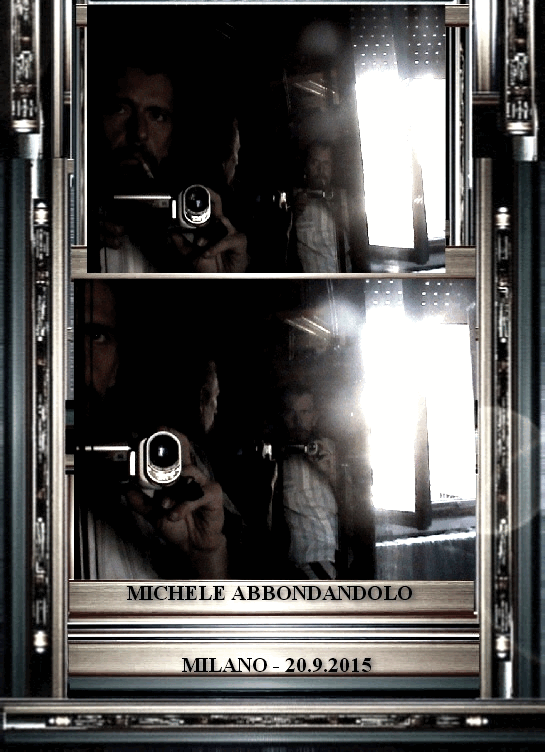


-

- ___Striker

-

